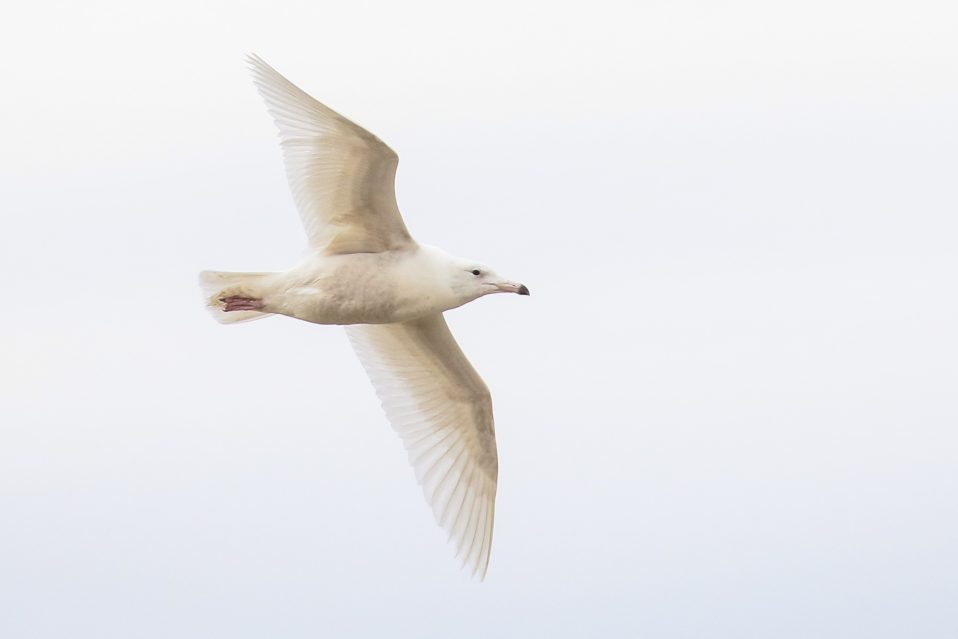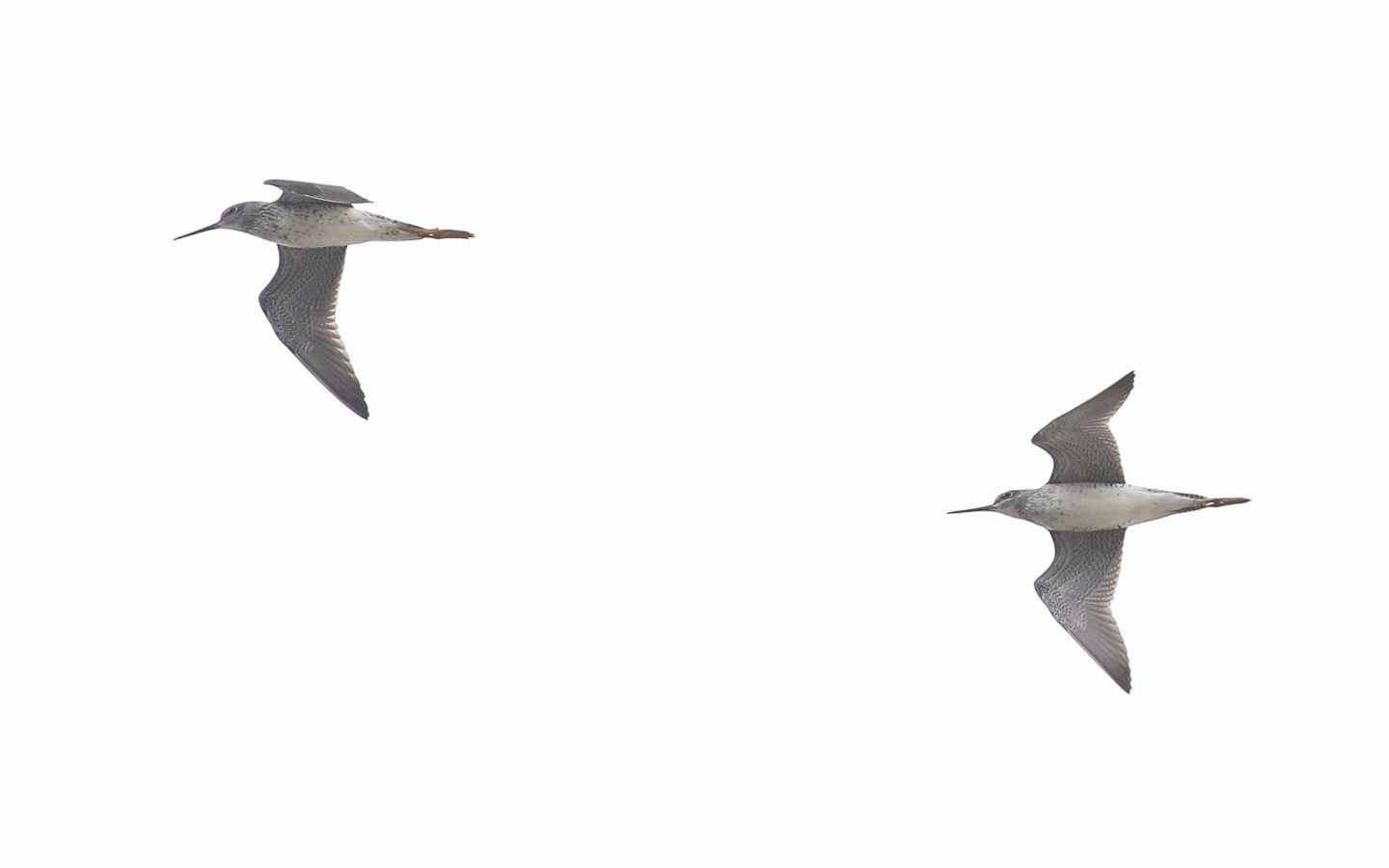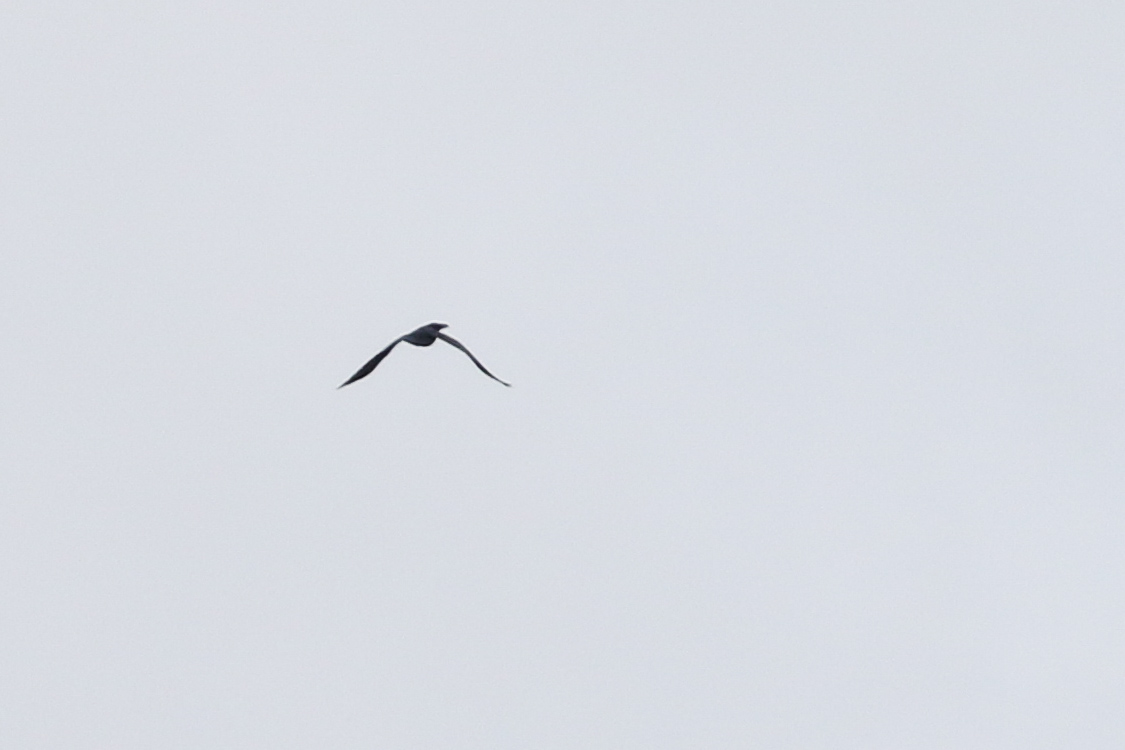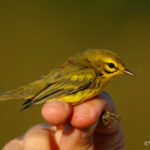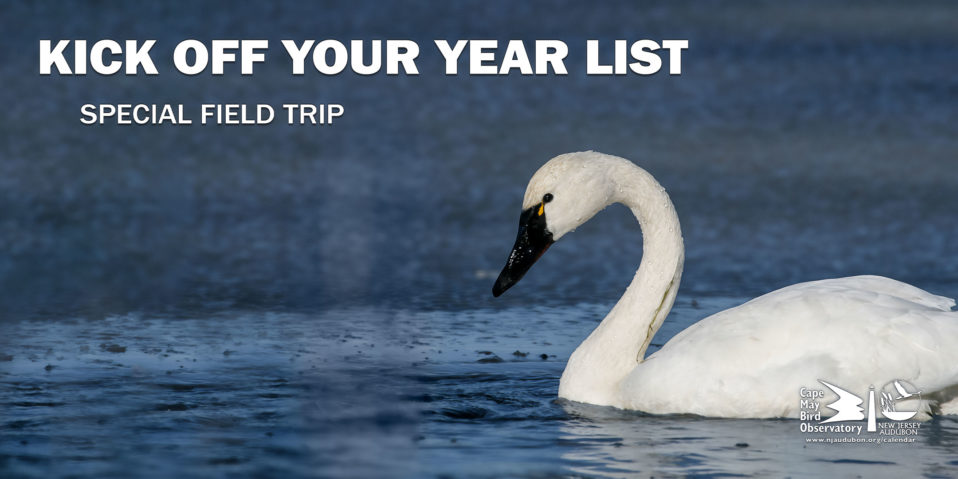Glaucous Gull adding some light to the deep overcast at Cape May Point on March 21. Photo © Tom Reed.
The Cape May Springwatch, a project of New Jersey Audubon’s Cape May Bird Observatory, takes place March 1 to May 31. The cornerstone of this effort is a visible migration watch at Coral Avenue, Cape May Point that starts at sunrise every day and continues for at least four hours. This year’s Springwatch season is made possible by the generous support of collaborators Larry & Judy Winne, plus partnerships with data entry provider Trektellen and the Borough of Cape May Point.
IMPORTANT NOTE: Due to the current Covid-19 pandemic, we have reduced staffing at the Springwatch count site and discourage the public from visiting at this time. While we are saddened to make this announcement, it is a decision that is made with the health of both staff and visitors in mind. Thanks to all for understanding and we look forward to welcoming everyone back to the watch in the near future!
To learn more about the Cape May Springwatch (and to view daily migration count totals), head over to our Springwatch information page.
Weather & Migration Summary
Gray skies, mist, and light north winds kicked off the week on the 15th. These conditions are less than ideal for migration, and the day’s total (<900 birds across 26 species) painted such a picture fairly well. A surprise Common Raven decided to pull a U-turn at the lighthouse and return north, a few Horned Grebes were nice to see in what appears to be a poor season locally for the species, and a trace of raptor movement included an immature Red-shouldered Hawk departing Cape May Point and an Osprey arriving from Delaware. The 16th brought a return of the sunshine but also some chill, with temps hovering around the freezing mark at daybreak. Winter-like air and continuing north/northeast winds largely kept migrants in place, with just 384 birds tabulated across 26 species. A more festive counting experience arrived for St. Patrick’s Day with 2,500+ Northern Gannets on the morning’s final tally, along with 24 American Oystercatchers cutting across the bay mouth, and a female Common Eider that found the Point’s small jetties to its liking.
More northerlies settled in for the 18th, resulting in a light passage that featured our first American Kestrel and American Pipit of the season traversing the Point’s dunes, followed later by a flock of 8 Great Blue Herons traveling north over Delaware Bay (and setting the stage for a total of 45 through the 21st). The 19th was a significant day for Northern Gannet, with Jason counting a remarkable 16,204 traveling east past the watch. This total represents the largest single-day sum since we have been monitoring spring migration at Coral Ave! Additional high notes included 18 Lesser Black-backed Gulls (likely a product of sustained easterly winds), 30 American Oystercatchers, and a Piping Plover sneaking past along the water’s edge with a Sanderling.
A short-lived bubble of warm air on the 20th allowed us to detect 41 species of active migrants, with a long list of highlights consisting of the season’s first Purple Martin and Chipping Sparrows, 27 Pine Warblers in morning flight over the dunes, 2 Rusty Blackbirds traveling overhead with cowbird/grackle flocks, and a Razorbill that dropped in on the bay. The week came to a soggy end on the 21st as heavy rain associated with a passing cold front made for difficult viewing conditions. A (very) obvious arrival of Laughing Gulls saw 1,000 move west past Cape May Point, while first-of-season sightings were logged for Yellow-throated Warbler, Snowy Egret, Barn Swallow, and Northern Rough-winged Swallow as drier conditions took hold later in the morning.
Other Wildlife
The continuing mild weather produced butterfly sightings on multiple days, with Red Admirals and unidentified anglewings (Eastern Comma or Question Mark) continuing to comprise all reports. Atlantic Bottlenose Dolphins remained a regular sight and staff continued to enjoy daily sightings of seals from the Coral Ave platform, with both Harbor and Gray seals still present in the mouth of Delaware Bay. In the amphibian department, Spring Peeper, Atlantic Coast Leopard Frog, and New Jersey Chorus Frog were all reported from the Springwatch recording area again this week.
March 22-28 Outlook
A peek at the upcoming week’s forecast again shows a mixed bag of weather, with showers or even a soaking rain possible on multiple days. We anticipate that waterbird migration could be strong during such conditions this week, and we are still at a favorable point in the season for some of the spring’s biggest flights of Long-tailed Ducks and scoters. We don’t expect a big surge of landbird migrants this week, but periods of drier, milder conditions could produce at least some influx of songbirds, swallows, and raptors.
[The arrival of swallows is a sure sign that spring is here. First-of-season Northern Rough-winged (left) and Barn (right) swallows at Coral Ave on March 21. Photo © Tom Reed.]
Notable Species
The following rare, unseasonable, or otherwise noteworthy species were reported within the Springwatch recording area during the past week:
Ruby-throated Hummingbird: the wintering, immature female continues to frequent at least a couple of Cape May Point backyards; it has also been seen flycatching on warmer days. This hardy individual potentially represents the first March record for the species in Cape May County and is presumably in line to become the first to successfully overwinter.
Glaucous Gull: an immature again put in several brief appearances this week, with reports logged from 2nd Avenue (Cape May City), South Cape May Meadows, and Coral Ave. It is unclear if this is the same individual that was seen during the previous week.
Ash-throated Flycatcher: remarkably, the wintering individual at Cape May Pt. State Park continues its winter residency. It was found on multiple days again this week. This bird, and another that remains at Sandy Hook, likely represent New Jersey’s first March records of this western visitor.
Common Raven: while a nesting pair now occupies the county’s northern limits, the species remains a very rare visitor at Cape Island. A single, calling individual put in a brief appearance over Cape May Point on the 15th. Interestingly, the sole raven recorded during the 2019 Springwatch season was detected on March 20.
House Wren: also unseasonable, multiple individuals remained at Cape May Pt. State Park this week, another sure indicator of the lack of winter. True northbound migrants won’t arrive until the second week of April.
Sedge Wren: one was found along the east path at the South Cape May Meadows on the 16th. We’ll be interested to see if one or more birds spend time here again this spring, following a number of reports from this site in spring 2019.
Nashville Warbler: at least one of two wintering individuals remained at Cape May Pt. State Park this week, recorded on multiple days.
By Tom Reed




